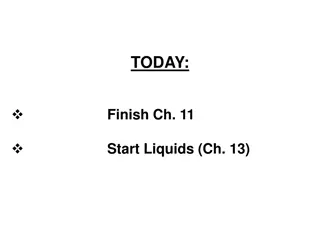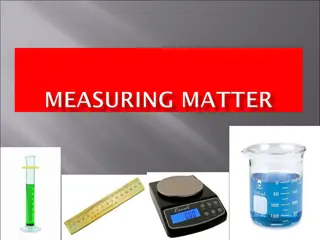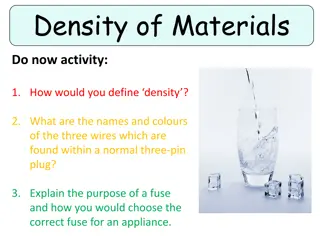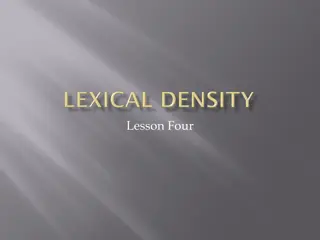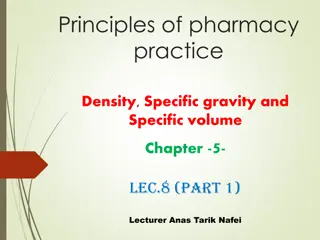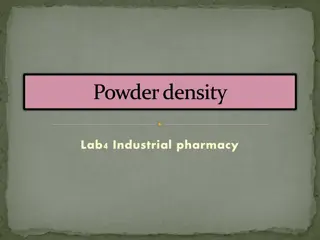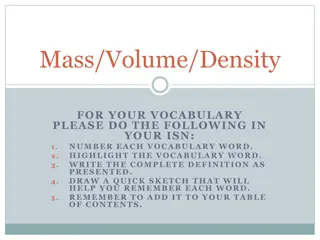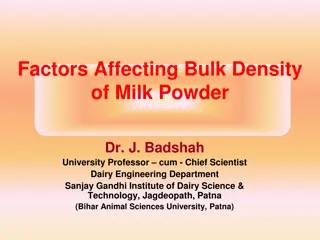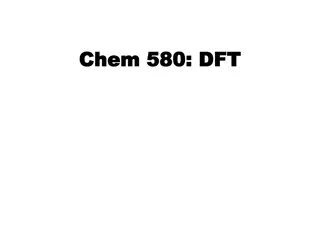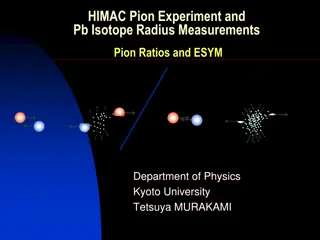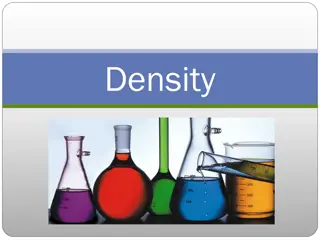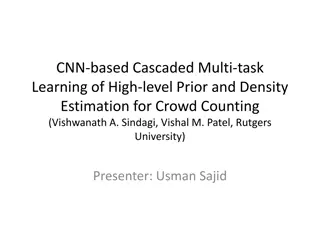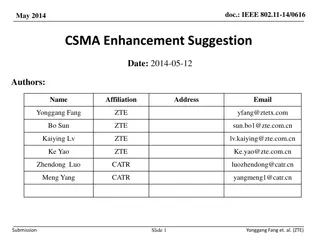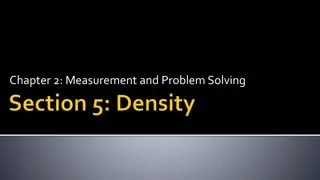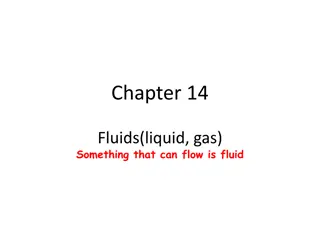Understanding Density in Science
Density is the measure of mass within a given volume, indicating how tightly matter is packed. Learn about density calculations, unit conversions, and solving examples involving various shapes like cuboids and cylinders. Practice finding density, mass, volume, and other related concepts with illustrations and helpful tips.
Uploaded on Oct 04, 2024 | 0 Views
Download Presentation

Please find below an Image/Link to download the presentation.
The content on the website is provided AS IS for your information and personal use only. It may not be sold, licensed, or shared on other websites without obtaining consent from the author. Download presentation by click this link. If you encounter any issues during the download, it is possible that the publisher has removed the file from their server.
E N D
Presentation Transcript
What is density? Density is the amount of mass in a volume. It tells us how tightly matter is packed together. Common units g/cm3 How many grams for every cm3. kg/m3 How many kg for every m3.
We can draw a diagram to represent the formulae for density Mass = Density x Volume Density = Mass Volume Volume = Mass Density M D V
Things to look out for: Are the units consistent? Do you need to calculate the volume before you start? 1 m 100 cm 1 m 100 cm 1 m 1 m = 1 000 000 cm 100 cm
A cuboid has dimensions of 9 cm x 3 cm x 12 cm. It has a mass of 194.4 g. Find the density of the cuboid. Volume = 9 x 3 x 12 = 324 cm Density = Mass Volume = 194.4 324 = 0.6 g/cm
A cuboid has dimensions of 2 m x 90 cm x 140 cm. It has a density of 0.8 kg/m3. Find the mass of the cuboid. Volume = 2 x 0.9 x 1.4 = 2.52 m Mass = Density x Volume = 0.8 x 2.52 = 2.016 kg
A cylinder has a mass of 270 g. It has a density of 0.78 g/cm3 and a height of 9cm. Find the radius of the cylinder. Volume = Mass Density = 270 0.78 = 346.1538462 cm
A cylinder has a mass of 270 g. It has a density of 0.78 g/cm3 and a height of 9cm. Find the radius of the cylinder. Volume = 346.1538462 cm 346.1538462 = x r x h 12.24268793 = r 3.498955263 = r r = 3.5 cm
Bingo Aim: Full House Grid: 9 Grid Play: Calculate answer & cross it off
Use any of these numbers in your grid (NO REPEATS) 3000 0.75 0.8 120 156.8 2.72 10 3200 240 1.6 1.79 35 0.6 11.4 36,800 75
Find the density of a piece of wood weighing 6 g and having a volume of 8 cm. 6 8 = 0.75 g/cm
Calculate the volume of a liquid weighing 4 kg and having a density of 1.25 g/cm3. 4000 1.25 = 3200 g
A 1 kg bag of sugar has a volume of about 625 cm3. What is the density of the sugar in grams per cubic centimeter? 1000 625 = 1.6 g/cm
Calculate the volume of a piece of wood that weighs 102 g and has a density of 0.85 g/cm3. 102 0.85 = 120 cm
Find the mass of a marble model, 56 cm3 in volume, if the density of marble is 2.8 g/cm3. 56 x 2.8 = 156.8 g
I bought a 50 kg bag of coal and estimated the total volume to be about 28000 cm3. What is its density in g/cm3 to 2 d.p.? 50 000 2 800 = 1.79 g/cm
Find the density of the material of a pebble weighing 34 g, which has a volume of 12.5 cm3. 34 12.5 = 2.72 g/cm
Oil has a density of 800 kg/m3. Convert this into g/cm3 800 1 000 000 x 1000 = 0.8 g/cm
A block of lead has a volume of 540 cm3 and a mass of 6.156 kg. Find its density in g/cm3 6156 540 = 11.4 g/cm
A statue is made of metal of density 8 g/cm3. Find the mass of the statue if its volume is 30 cm3. 8 x 30 = 240 cm
It is estimated that the statue of Queen Victoria in Endcliffe Park, Sheffield has a volume of about 4 m3. The density of the material used to make the statue is 9.2 g/cm3. What is its mass? 4 x 9200 = 36 800 g
The volume of a solid object is 5 cm3 and its mass is 50 g. Calculate the density of the material. 50 5 = 10 g/cm
Water of density 1000 kg/m fills a pool. The mass of the water is 35 tonnes. (1 tonne = 1000 kg) Calculate the volume of the pool. 35 000 1000 = 35 m
A cuboid of dimensions 4 cm by 5 cm by 3 cm is made of metal with density 10 g/cm3. Calculate the mass of the cuboid in kg. 4 x 5 x 3 = 60 cm 60 x 10 = 600 g = 0.6 kg
A certain type of plastic has a density of 3 g/cm3. Convert the density into kg/m3 3 x 1 000 000 1000 = 3000 kg/m
A cast-iron rod 2 m long has a cross- sectional area of 14 cm2. The mass of the rod is 210 kg. Calculate the density of the rod in g/cm3 14 x 200 = 2800 cm 210 000 2800 = 75 g/cm
Answers 1a) 9 g/cm b) 2.1 g/cm 2a) 20 g b) 570 kg 3a) 4 cm b) 6 m 4a) 70 cm b) 805 g 5a) 720 cm b) 0.55 g/cm 6a) 2500 cm b) 2.5 L 7a) 1500 cm b) 4050 g or 4.05 kg 8a) 8482.3 mm or 8.5 cm b) 161.2 g


